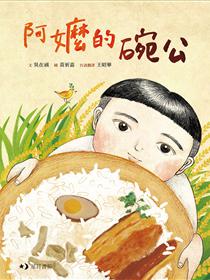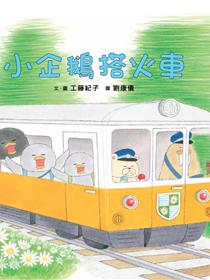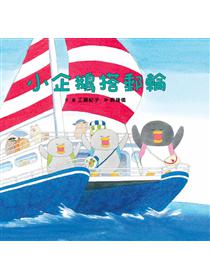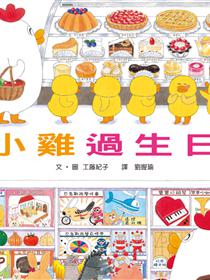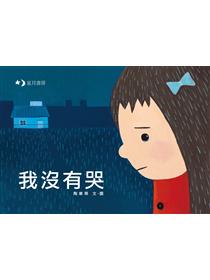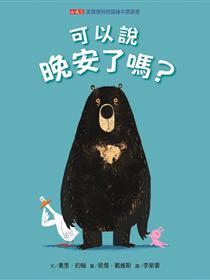章節試閱
Formosa!
Flying thirteen hours on an airplane felt like a trip to the galaxy. Okay, well, maybe not quite, but it was really a long journey. It probably felt that long because the more I read and learned about Taiwan, the more I longed to get there.
Finally, we were flying on top of Taiwan. As the airplane descended, through the clouds below, I saw the vast blue ocean, followed by a land of green. Dad told me, Taiwan was once named Formosa, which means ”beautiful island” in Portuguese.
The pilot announced the land temperature in Taiwan was 37⁰ Celsius, approximately 99⁰ Fahrenheit. It was going to be extremely hot!
‧Taiwan is located in the Western Pacific Ocean to the southeast of China and to the north of the Philippines. The Tropic of Cancer runs through it.
‧The highest point is Yushan, which is 3,952 meters, or 12,966 feet in height. It's the tallest mountain in Northeast Asia!
‧The area of Taiwan is roughly 36,000 square kilometers, about the same size as Belgium or the state of Maryland in the US.
‧The population of Taiwan is around 23 million people.
‧Three quarters of Taiwan is made up of mountainous regions. It is subtropical in the north and tropical in the south. There are four seasons but with little change in temperature. The summer temperatures can reach as high as 39⁰ Celsius. From July to October is the typhoon season. The typhoons are the strongest in the southern and eastern coast, where they tend to land more often, but can also do a lot of damage to places like Taipei.
(中文手冊翻譯)
美麗的島嶼
經過了十三個小時的飛行,感覺就像飛了一趟銀河一樣。好啦,可能不完全是,但這趟路途真是有夠遠的!我想,可能是因為知道愈多關於台灣的事,我就愈期待來到這裡 , 所以才會覺得路途遙遠。
我們終於飛到台灣上空了。當飛機逐漸降低高度,穿到雲層下方的時候,我看到藍色的大海,接著是一整片綠油油的大地。爸爸說,台灣曾經名為「福爾摩莎」,葡萄牙語的意思就是「美麗的島嶼」。
這時機長開始廣播,目前台灣地面溫度大約是攝氏 37度,相當於華氏99度。有夠熱!
‧台灣位於西太平洋,在中國的東南方以及菲律賓的北方,並有北迴歸線從中
經過。
‧最高峰玉山,海拔大約3,952公尺或12,966英尺。它是東北亞最高的山。
‧台灣的面積約36,000平方公里,相當於美國的馬里蘭州或歐洲的比利時那麼
大。
‧台灣的人口大約 2,300 萬人。
‧山地占台灣全島面積約 3/4。台灣北部屬於亞熱帶氣候區,南部則屬於熱帶
氣候區,四季溫差較小。夏季最高溫可達攝氏39 度。7月到 10月為颱風季節,容易對東部與南部造成災害,有時候也會侵襲像台北等地方。
Lunar New Year
Jay told me that the time to see Chinese calligraphy in action is during the Lunar New Year when people paste Spring Festival couplets on their homes’ gateposts or door panels. The Spring Festival couplets are auspicious words written on red paper. Although nowadays there are machine-printed couplets, many people still enjoy writing them with a brush.
It is summer vacation now, so i didn't get to experience the festive Lunar New Year atmosphere. However, Jay took out his phone and showed me some photos he took during the Lunar New Year, photos of the family having dinner together with Jay holding many red envelopes, which he received from the elders. The red envelope is a very interesting custom. It symbolizes blessings which the elder pass down to the young.
‧When is the Lunar New Year?
The lunar calendar has been passed down through the ancestry of Taiwan and is still in use today. The Lunar New Year usually falls on a day in January or February by the western calendar. It is the most important holiday and festival in Taiwan. Many traditional holidays go by the Lunar calendar, such as the Dragon Boat Festival, and the Moon Festival.
‧The whole family gathers on New Year's Eve to have auspicious dishes for dinner together. Here are what the foods symbolize taken from their pronunciations or their shapes in Chinese:
Sticky Cake: prosper every year
Sweet Cake: wealth
Dumplings: more money (shaped like ancient silver ingots)
Mustard Greens: long life
Fish: yearly surpluses
‧Some families worship their ancestors before the new year's eve dinner.
‧Some Buddhist temples organize the New Year’s Eve Bell Knocking ceremony as a prayer for peace and safety in the new year.
‧At 12:00 midnight, many people set off firecrackers to welcome the New Year.
‧On the second day of the New Year, a married woman should return to her mother's home with her husband and kids.
‧The fifteenth of the lunar month is the Lantern Festival. The Taiwanese celebrate the day by carrying beautiful lanterns and playing the riddle-guessing game. Some would go outdoors to watch the big lanterns on display. In addition, they also eat sweet rice dumplings to celebrate the festival.
‧On the day of the Lantern Festival, people would write down their wishes on the sky lantern, and then set the lanterns free to float upward toward the sky like hot air balloons, and at the same time pray for themselves and their family. Sky lanterns are also called "prayer lights" or "peace lights." The Pingxi Sky Lantern Festival is a very culturally characteristic event in Northern Taiwan.
(中文手冊翻譯)
歡喜熱鬧過新年
小傑說,農曆新年期間比較容易看到有人寫書法,因為大家過年時習慣在門上貼春聯。春聯就是在紅色的紙上寫吉祥話,雖然現在有印刷的春聯,但很多人還是喜歡用毛筆寫。
因為現在是暑假,沒辦法體驗台灣熱鬧的過年氣氛,小傑特別秀出手機裡的照片給我看。照片是今年過年時候拍的,有全家一起吃年夜飯,還有小傑手上拿著好多紅包的照片。這些紅包都是長輩給小傑的,裡面是帶有祝福意味的「壓歲錢」。真是個有趣的習俗!
‧農曆新年是什麼時候 ?
農曆新年是台灣最大的節日,通常在每年陽曆的一或二月。農曆是華人社會
從古代流傳下來的曆法,在台灣仍繼續使用,許多傳統節日的日期都是看農
曆,例如:端午節、中秋節等。
‧除夕夜全家人要聚在一起吃年夜飯,很多菜都代表吉祥的意思喔!
年糕:年年高升
發糕:發財
餃子:招財進寶(形狀像古代的錢:元寶)
長年菜:長壽
魚:年年有餘
‧有些家庭除夕要祭拜祖先,然後才吃年夜飯。
‧有的佛教寺廟會在除夕夜舉行撞鐘儀式,有很多人參加,祈求新年平安。
‧除夕的午夜12點整,許多人會放鞭炮迎接新年。
‧新年第二天(初二),結了婚的女兒要帶著先生與孩子回她的父母家拜年。
‧農曆元月十五是元宵節,台灣人會在這一天提漂亮的燈籠、猜燈謎,或欣賞
五彩繽紛的大型花燈。另外,也會吃糯米做的元宵。
‧元宵節那天,人們將願望寫在天燈上,藉由熱氣球升空的原理,讓天燈飛升
到空中,為自己和家人祝福。天燈又稱「祈福燈」或「平安燈」,平溪天燈節是台灣北部最具有民俗特色的文化活動。
Night Market
The night market is something you don’t want to miss when you visit Taiwan.
The night market is really bustling and busy at night. There are all kinds of novelty foods that I’d never seen before! Jay was our food guide, and he recommended the stinky tofu. What could it be like? I was curious and went near the stinky tofu stand. What a funny smell! Jay said that it was made of soybeans, “It smells very good!” he said.
In addition to the stinky tofu, somebody was roasting Taiwan sausage, which looked like a hot dog. Compared to the tofu, I could eat this because it smelled really good. It didn’t taste like a hot dog, nor a German sausage. It was special in its own way.
There were many games for people to play in the open outdoor area. I played the circle; throwing, and won a small doll. We stayed till over 10PM. It was late but the night market didn’t seem to be closing any time soon. I also heard that there’s a 24-hour bookstore in Taipei. Wow, there’s really a lot going on at night in Taiwan!
‧Cotton candy is made with white sugar. Very special, isn’t it?
‧A skewer sticking through tomatoes or other fruits, topped with a layer of syrup outside is called candied fruit.
‧The Taiwan sausage is made from ground pork, and roasted on charcoal fire.
‧The oyster omelet is made using eggs, oysters, and vegetables.
‧The stinky tofu is made from soybeans. It has a unique taste because of it’s fermentation process. It is a very famous snack in Taiwan.
‧At a salty fried chicken food stand there are many food products to select from. Make sure you ask the vendor to fry it crunchy for you.
‧At the fun game table, you can accumulate points for prizes.
‧Scoop goldfish with a paper net!
‧Target well and circle the toy you want to take home!
(中文手冊翻譯)
逛夜市
來到台灣,一定不能錯過的是夜市。
夜市真熱鬧,我們看到好多從來沒見過的新奇食物,每一樣都想吃吃看。
小傑很熱心的幫我們介紹,他說可以試試臭豆腐。這是什麼樣的食物呢?我好
奇的走近賣臭豆腐的攤子,啊!好奇怪的味道……小傑說這是用黃豆做的,味
道一點都不奇怪,他覺得很香。
除了臭豆腐,還有人在烤一種形狀像熱狗的台灣香腸。這個我比較敢吃,
因為真的很香,而且吃起來不像熱狗、也不像德國香腸,很特別就是了。
夜市裡有小販露天擺著遊戲台,讓來往的人停下來玩。我去玩了拋圈圈,還套
到一個小玩偶。我們一直逛到晚上十點多才離開,雖然已經很晚了,但夜市並
沒有要打烊的樣子。我聽說台北有24小時營業的書店,台灣的夜晚真熱鬧!
‧棉花糖是用白糖做的,很特別吧!
‧ 用一枝竹籤將小番茄或其他水果串成一串,外面淋上一層糖漿,叫做糖葫蘆。
‧ 在碳火上烤熟的台灣香腸,是將豬絞肉灌進豬腸製成的食物。
‧ 以蛋、牡蠣、青菜為原料做的蚵仔煎。
‧ 以黃豆為原料製成的臭豆腐,因為經過發酵,所以產生一種特殊的味道,是台灣很著名的小吃。
‧ 鹽酥雞的攤子上擺滿了各式各樣的食材,可以任意挑選,請老闆幫忙油炸成香酥的口感。
‧ 好玩的遊戲台,可以累積分數換獎品。
‧ 用紙網玩撈金魚。
‧看準目標拋圈圈,套中的玩具可以帶回家。
Formosa!
Flying thirteen hours on an airplane felt like a trip to the galaxy. Okay, well, maybe not quite, but it was really a long journey. It probably felt that long because the more I read and learned about Taiwan, the more I longed to get there.
Finally, we were flying on top of Taiwan. As the airplane descended, through the clouds below, I saw the vast blue ocean, followed by a land of green. Dad told me, Taiwan was once named Formosa, which means ”beautiful island” in Portuguese.
...
 10收藏
10收藏

 28二手徵求有驚喜
28二手徵求有驚喜
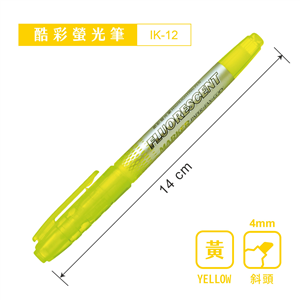



 10收藏
10收藏

 28二手徵求有驚喜
28二手徵求有驚喜




